DUNGENESS – WHERE THE WILD THINGS ARE
Dungeness has a stark, unique, and other worldly beauty which leaves no one untouched. Love it or hate it, you’ll never forget a visit to Dungeness.
THOSE WILD THINGS…
Dungeness is one of the largest expanses of shingle beach in Europe, and of international conservation importance due to its geomorphology, plant and invertebrate communities and bird life. It is a national nature reserve (NNR), a Special Protection Area (SPA), a Special Area of Conservation (SAC) and Site of Special Scientific Interest (SSSI).
Over 600 types of plant are found here – a third of all those found in Britain. It is also home to many very rare moths, bees, beetles and spiders, some of which are found nowhere else in the country.
RSPB Dungeness is visited every year by thousands of migratory and coastal bird species, who enjoy the brackish and fresh water and take refuge on the manmade islands on Barrowes Pit.
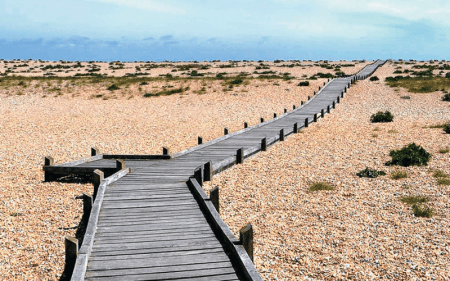
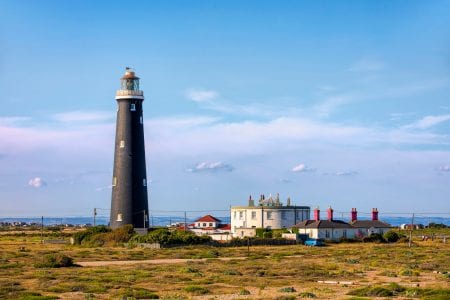
SHINE A LIGHT
“I can think of no other edifice constructed by man as altruistic as a lighthouse. They were built only to serve” said George Bernard Shaw, and the Dungeness lighthouses have been serving those on the sea since 1615.
Over the intervening 400 plus years, there have been seven lighthouses – two low and five high – at Dungeness, with two still standing.
Building the High Light Tower began in 1901, and it was first lit in 1904. No longer operational, visitors can climb the 46m/150ft Tower and take in the stunning views across Romney Marsh and out to sea.
The current, and fifth, lighthouse, Dungeness Lighthouse came into service in 1961, after the nuclear power station got in the way of the light from the High Light Tower.
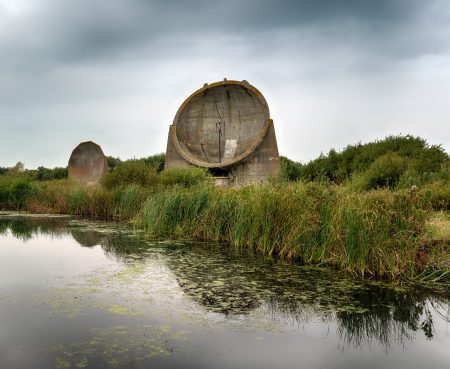
DUNGENESS DEFENCES
The ‘Listening Ears’ or acoustic mirrors were pioneered here between 1928 and 1930, aiming to detect invading aircraft by focussing sound waves. The site was ideal, because it was one of the quietest in Britain, however the advent of radar quickly made them obsolete.
PLUTO (Pipeline Under the Ocean) saw some of the world’s first underwater oil pipelines laid between Dungeness and Ambleteuse in France to provide fuel for the D-Day landings. They were part of a network called DUMBO – the other route, BAMBI, ran from the Isle of Wight to Cherbourg. An early nod to Disney perhaps!
ARTY DUNGENESS
The stark beauty and unusual buildings and locations have provided inspiration for artists of all sorts for many years.
Musicians of note have filmed and recorded here, from Ed Sheeran, Lighthouse Family, Turin Brakes, The Thrills, The Prodigy, Nicki Minaj and even Aled Jones! The area has been seen on TV in shows as diverse as The Inspector Lynley Mysteries, EastEnders and Doctor Who.
Artists and writers also flock here, taken by the solitude and the quality of the wide-open skies and pure brilliance of the light.
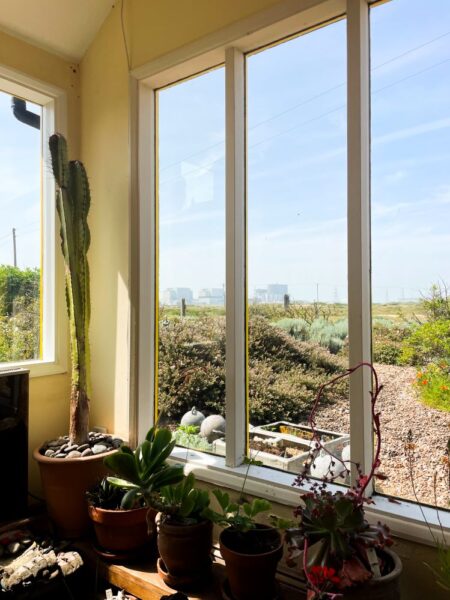
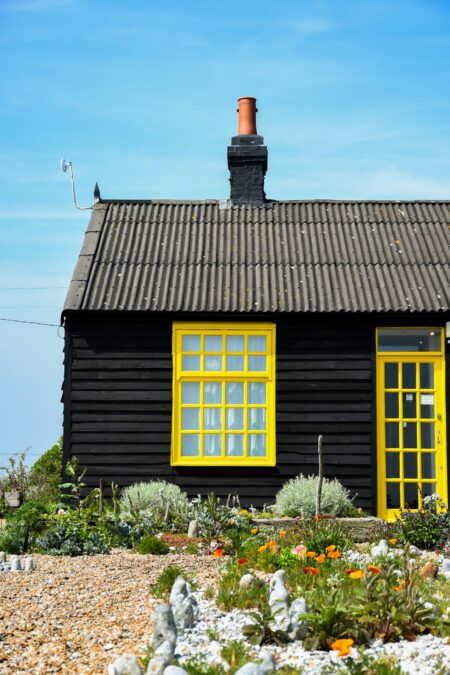
AROUND AND ABOUT
Dungeness is a great place for a wander – wooden weatherboard beach houses, some done up and others showing their age; around 30 houses converted from old railway coaches in the 1920s; the terrace formerly inhabited by coastguards; and the old lighthouse men’s accommodation are all still there.
Avant-garde artist, filmmaker and man of all talents Derek Jarman owned Prospect Cottage, which painted in black with yellow accents is a popular highlight. Part of John Donne’s poem ‘The Sunne Rising’ is painted on one side, and the garden reflects the bleak windswept landscape filled with pebbles, driftwood, scrap metal and a few hardy plants.
These houses are private but can be seen from the roadside and the beach paths.
EATING AND DRINKING
All that fresh air and walking will undoubtedly raise an appetite! Fortunately, there’s plenty of choice.
The Britannia and the Pilot Inn offer pies, pints, and, of course, fish ‘n chips.
The Snack Shack at the Fish Hut is the place for catch of the day – either to eat there and then or take home to cook your own fish supper. And The End of the Line is, appropriately enough, situated right at the station.

NUCLEAR POWER
Dungeness A and B nuclear power stations were responsible for generating electricity since 1965 and 1983 respectively. Now decommissioned, while you cannot go inside you can explore the perimeter and spot the flora and fauna that thrives in the area.
GETTING HERE
There are two roads to Dungeness – along the coast from New Romney, or via Lydd, both accessible and signposted from the A259. They converge near the Pilot Inn, then it’s a single-track road down to the tip of Dungeness. Buses operate in the summer (www.stagecoach.co.uk) and it’s great news for cyclists – flat all the way!
Alternatively, visit in true 1930s style by riding the Romney, Hythe and Dymchurch Railway (times, bookings and more information at www.rhdr.org)